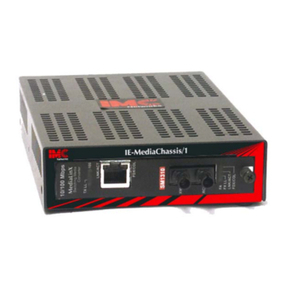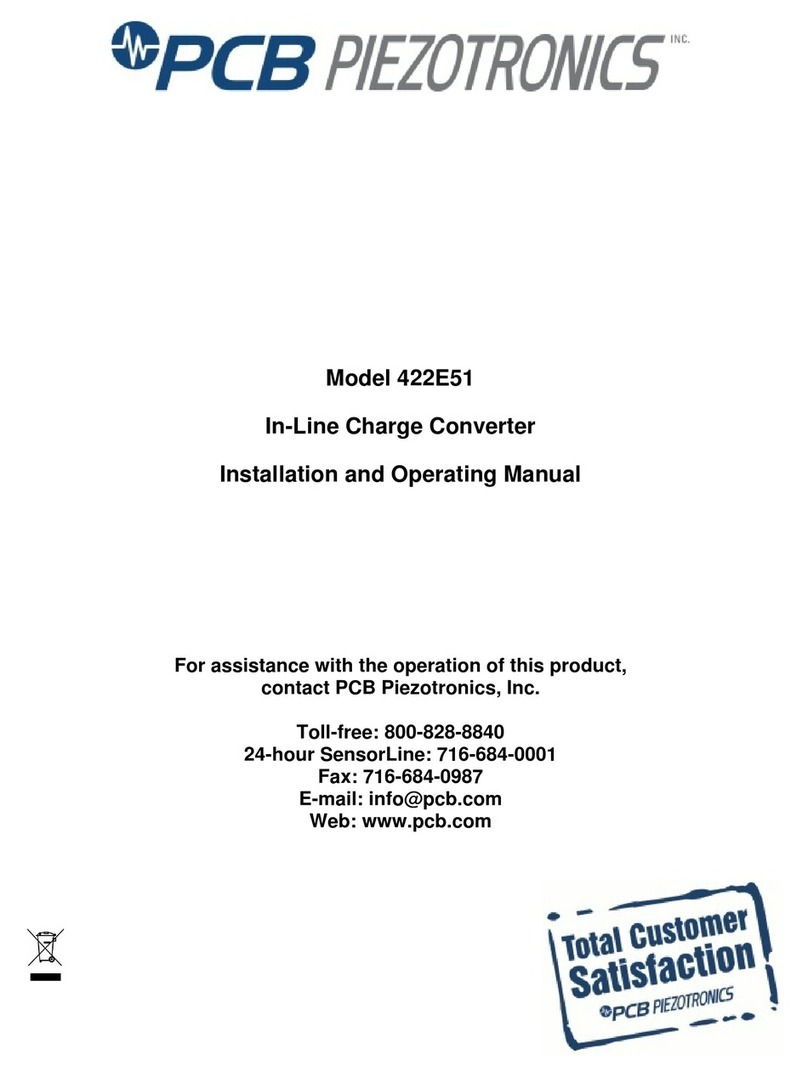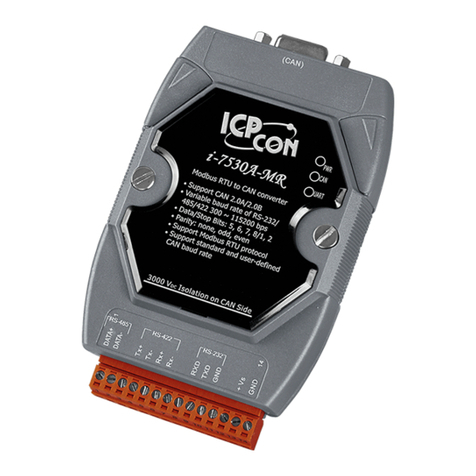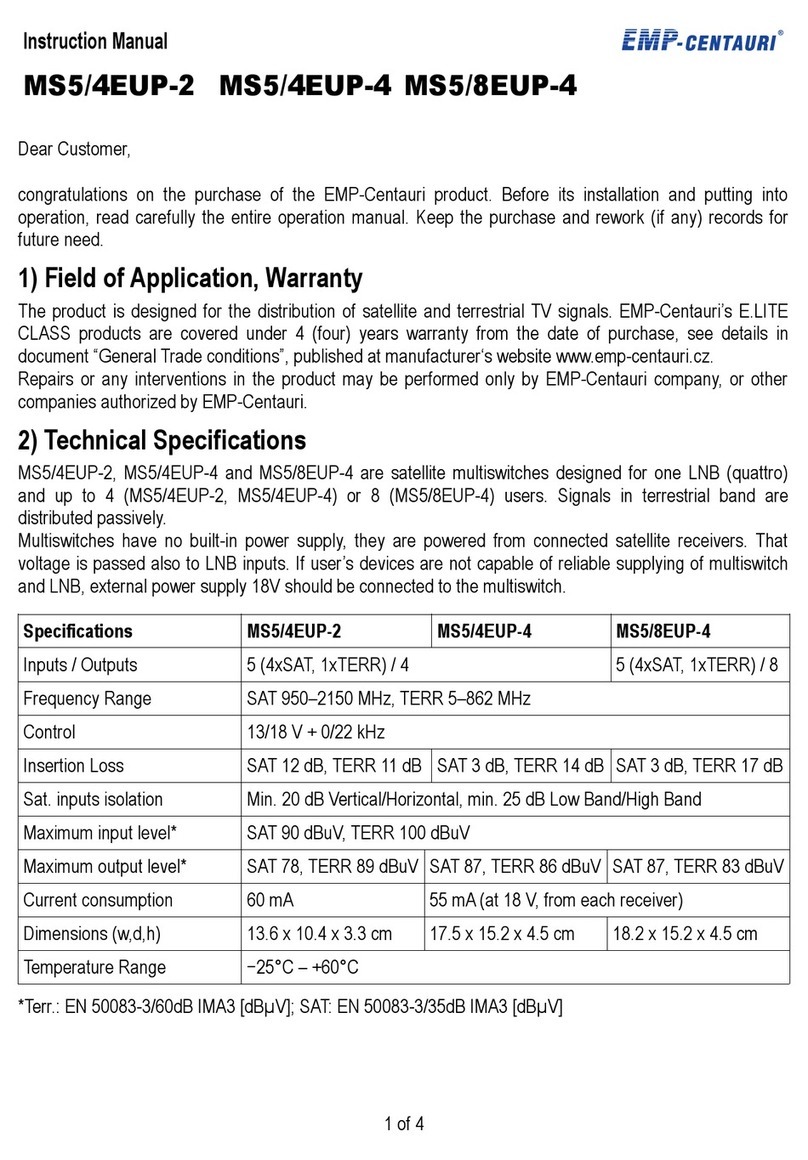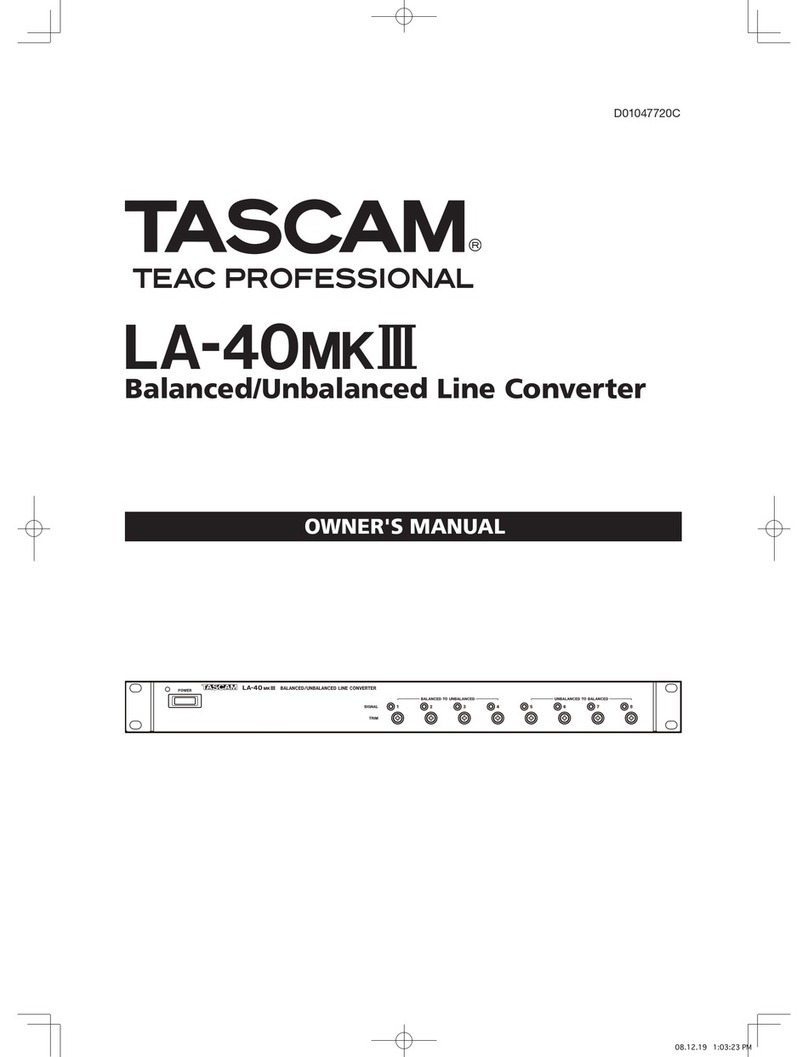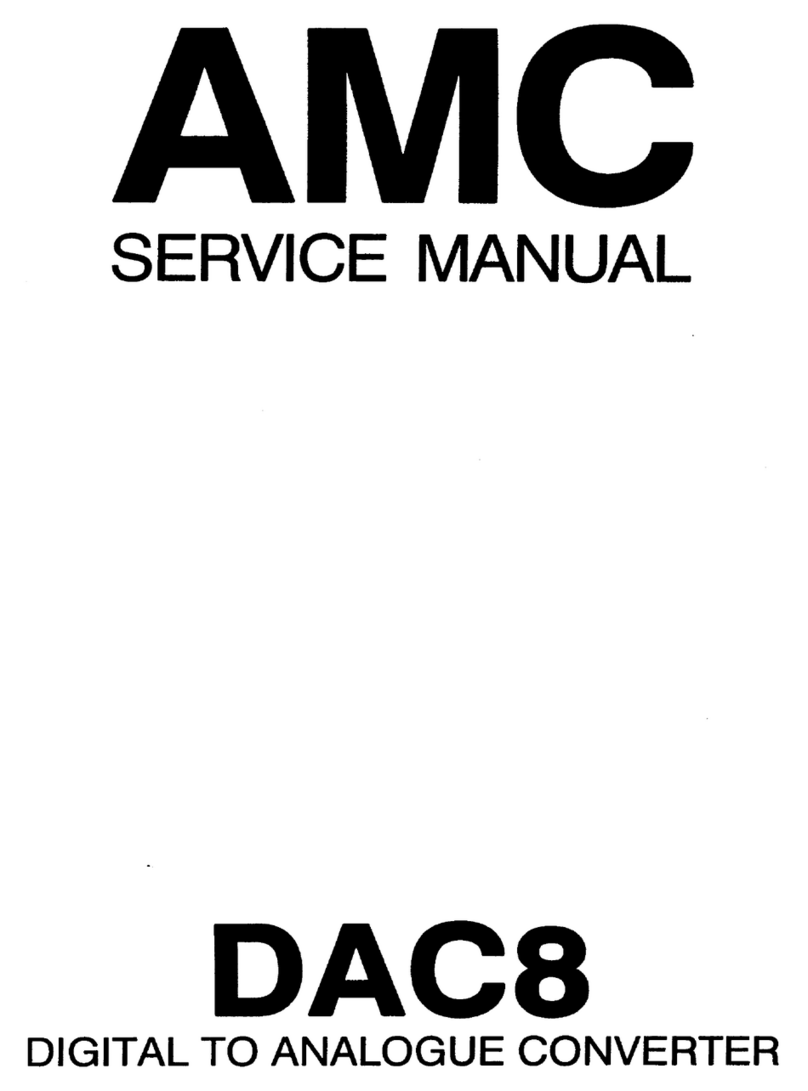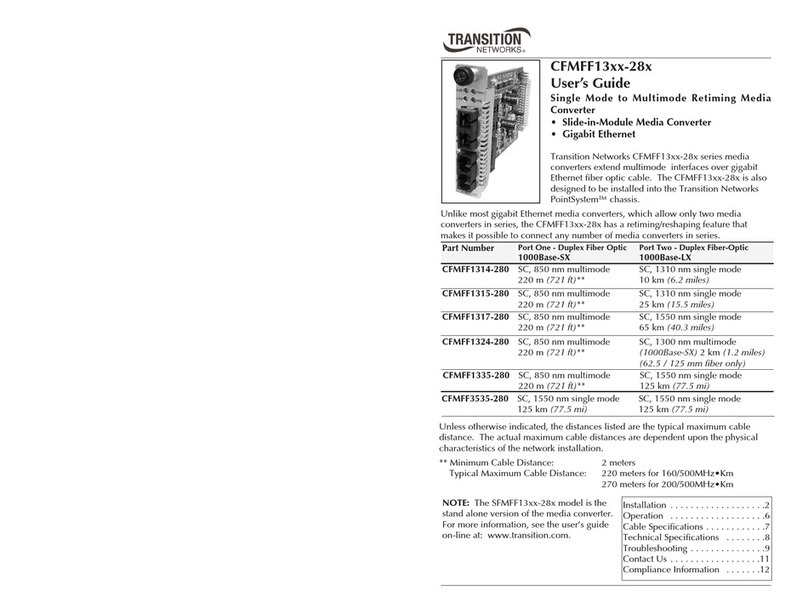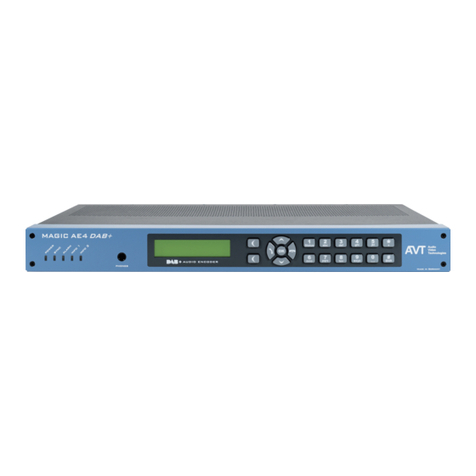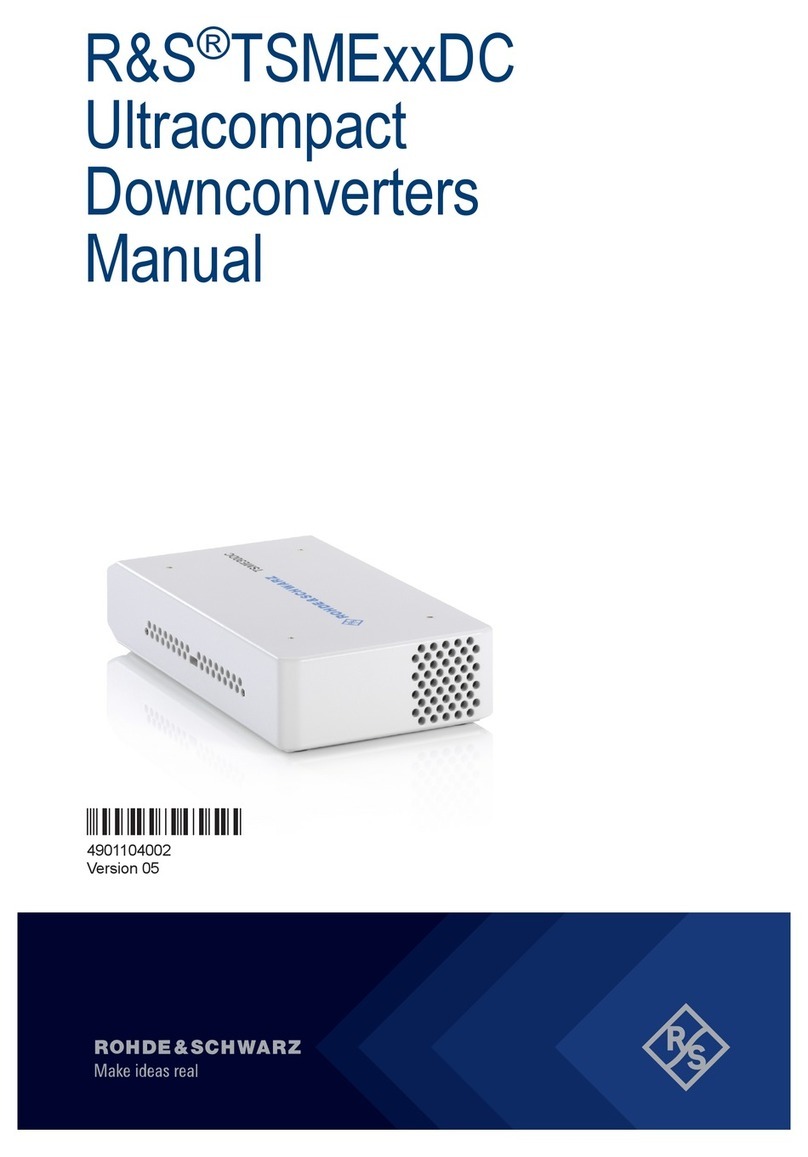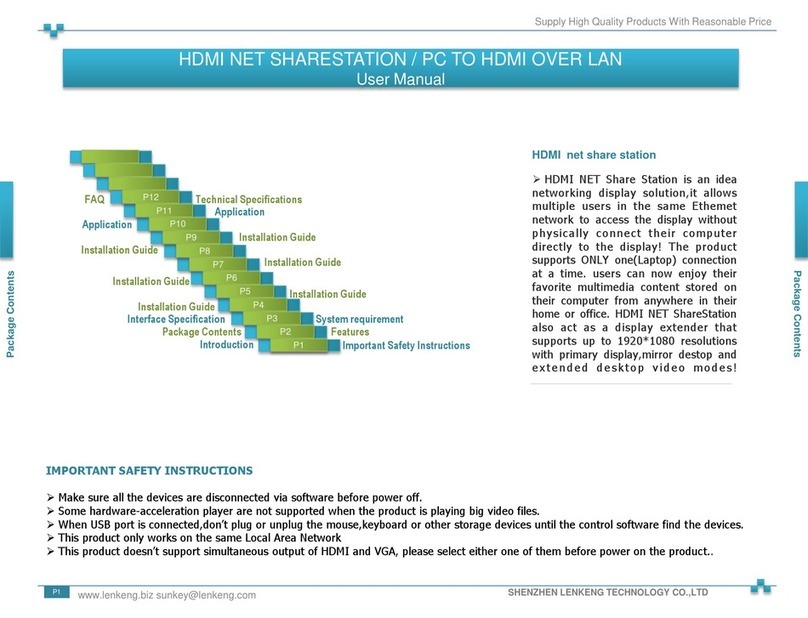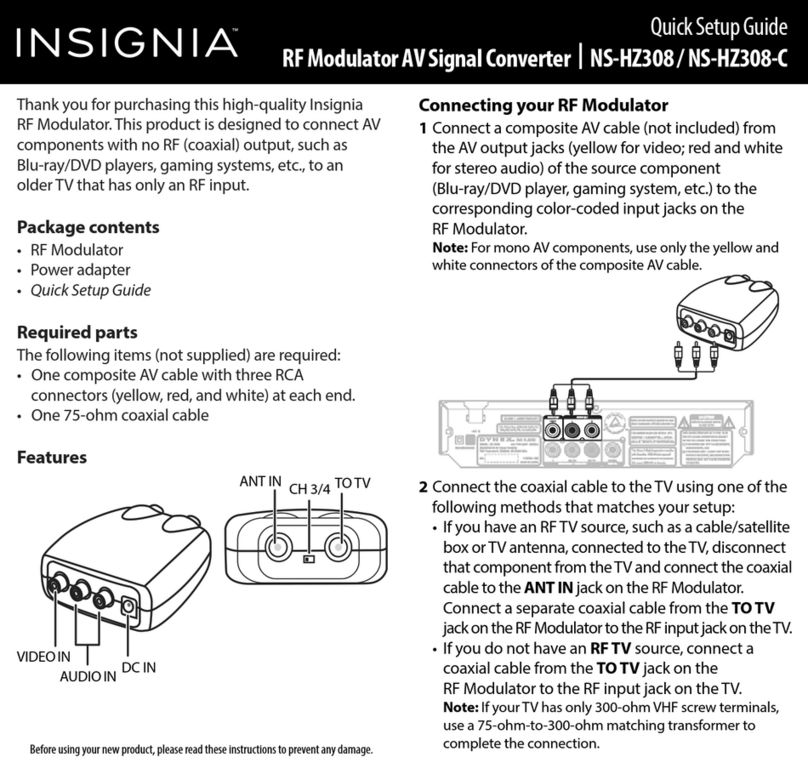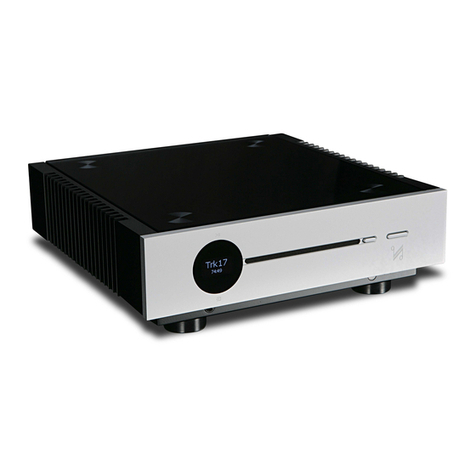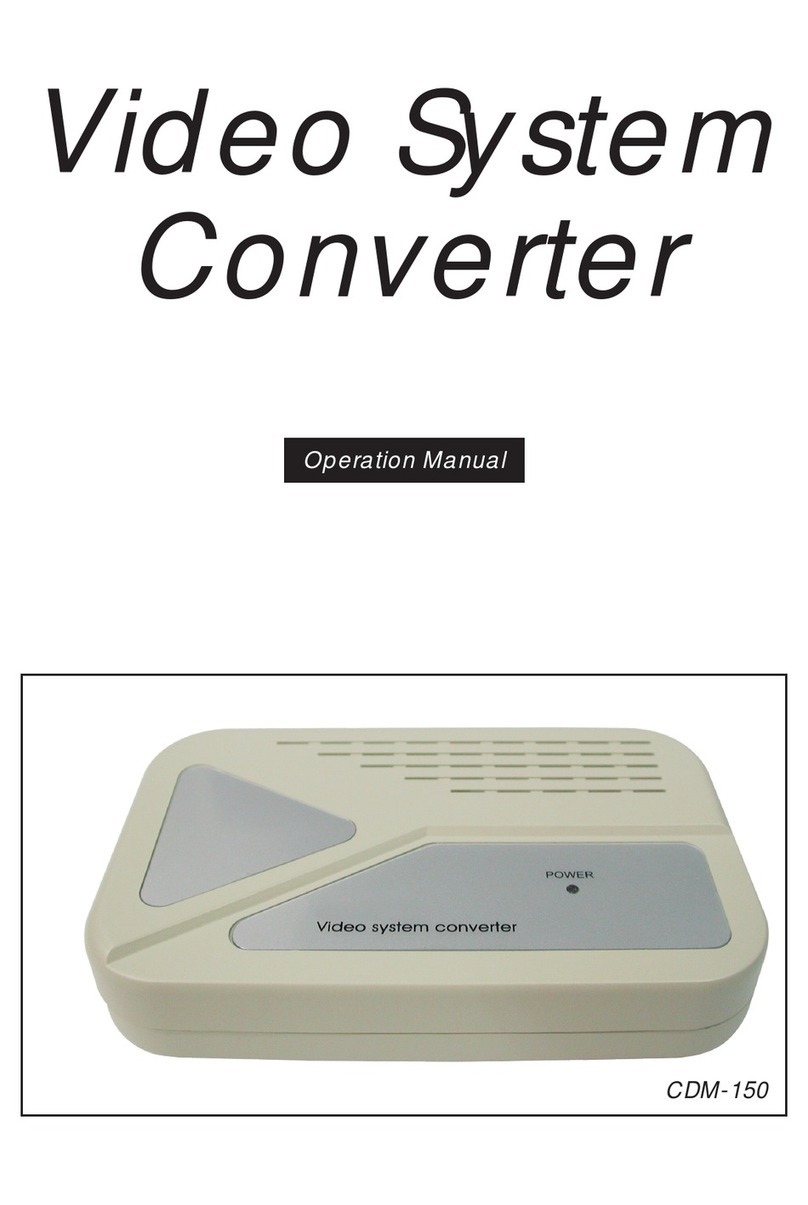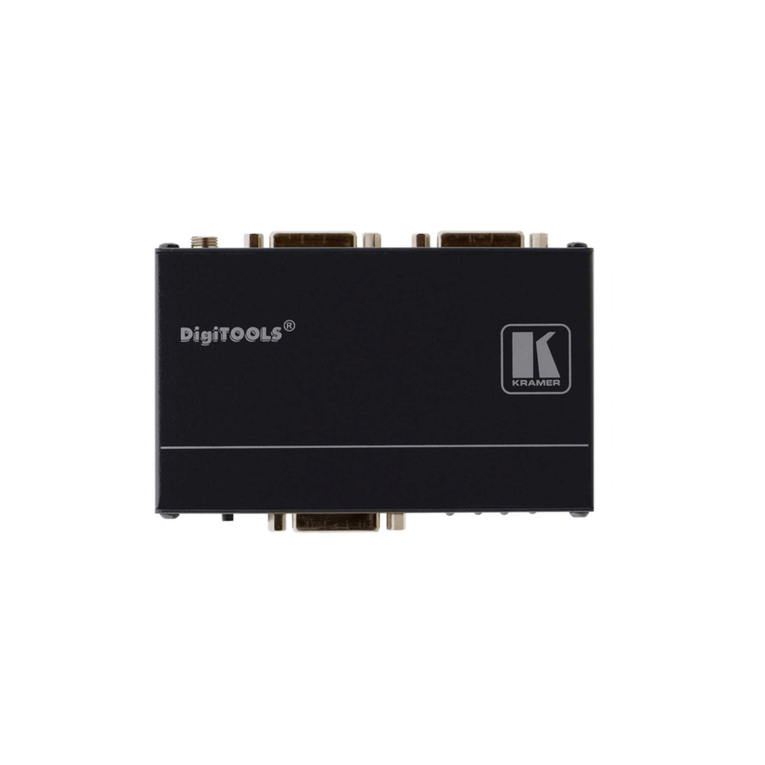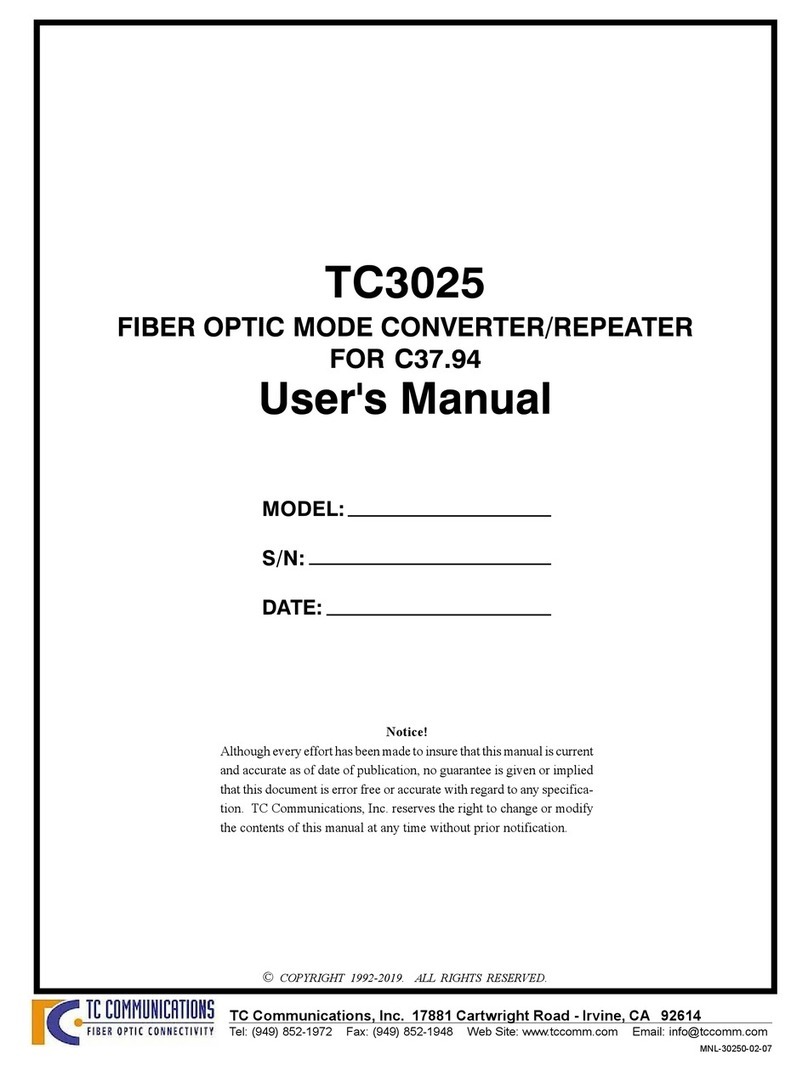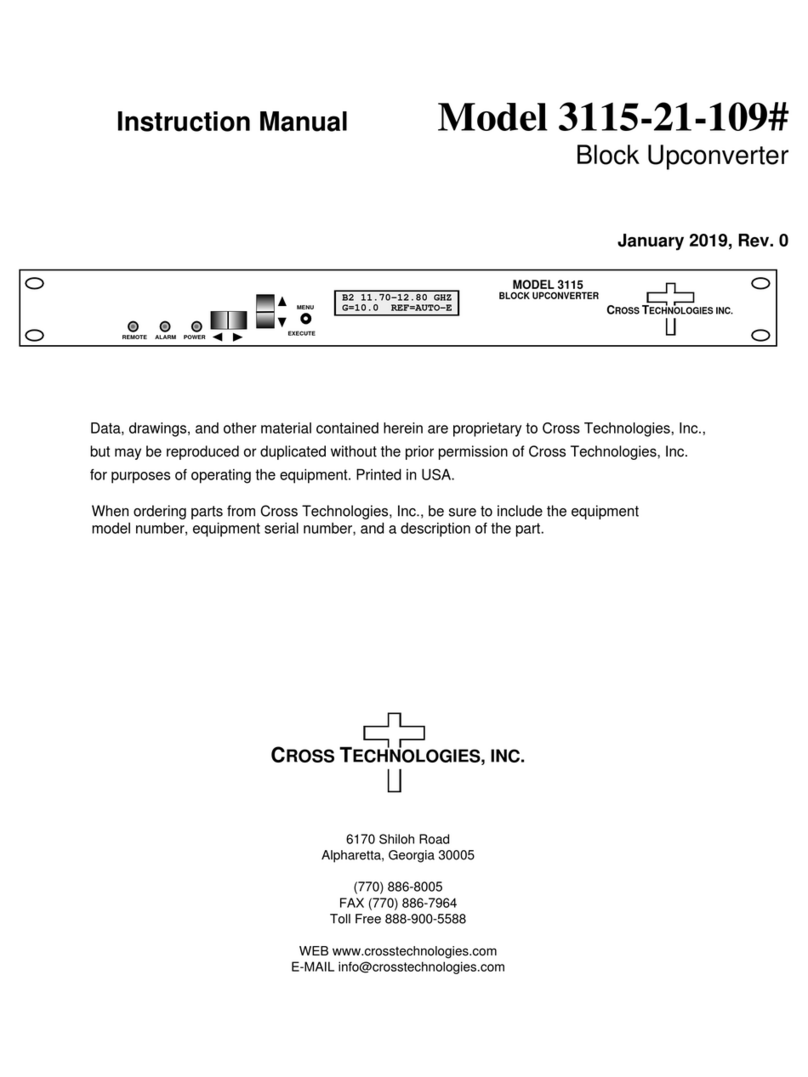Sfar SFAR-1M-4DI User manual

Version 3.0 Page 1/ 12
SFAR-1M-4DI
User Manual
Expansion Module –4 Digital Inputs
Global Control 5 Sp. z o.o.
Warsaw, Poland
www.gc5.pl

SFAR-1M-4DI User Manual
Version 3.0 www.gc5.pl Page 2/ 12
Table of contents
2.1. Purpose and description of the module....................................................................... 4
2.2. Technical specifications ................................................................................................. 5
2.3. Dimensions of the product ............................................................................................. 6
3.1. Grounding and shielding ................................................................................................. 6
3.2. Network termination........................................................................................................ 7
3.3. Types of Modbus registers............................................................................................. 7
3.4. Communication settings ................................................................................................ 7
3.4.1. Default settings...................................................................................................... 7
3.4.2. Configuration registers......................................................................................... 8
5.1. Block diagram ................................................................................................................... 9
5.2. Connection of digital inputs ........................................................................................... 9
6.1. Registered access..........................................................................................................10
6.2. Bit access.........................................................................................................................11

SFAR-1M-4DI User Manual
Version 3.0 www.gc5.pl Page 3/ 12
Thank you for choosing our product.
This manual will help you with proper handling and operating of the device.
The information included in this manual have been prepared with utmost care by our
professionals and serve as a description of the product without incurring any liability for the
purposes of commercial law.
This information does not discharge you from the liability of your own judgement and
verification.
We reserve the right to change product specifications without notice.
Please read the instructions carefully and follow the recommendations concluded therein.
WARNING!
Failure to follow instructions can result in equipment damage or impede the use of the
hardware or software.

SFAR-1M-4DI User Manual
Version 3.0 www.gc5.pl Page 4/ 12
1. Safety rules
1. Refer to this manual before the first use
2. Make sure that all cables are connected properly before the first use
3. Please ensure proper working conditions, according to the device specifications
(e.g., supply voltage, temperature, maximum power consumption)
4. Turn the power supply off before making any modifications to wiring connections, turn
off the power supply
2. Module features
2.1. Purpose and description of the module
4DI Module is an innovative device that provides a simple and cost-effective extension of the
number of lines of input in popular PLCs.
The module has 4 Digital Inputs with configurable timer/counter option which allows to
connect two encoders. All inputs are isolated from the logic by optocouplers. Each channel
can be individually configured in one of several modes.
This module is connected to the RS485 bus with twisted-pair wire. Communication is via
Modbus RTU or Modbus ASCII. The use of 32-bit ARM core processor provides fast
processing and quick communication. The baud rate is configurable from 2400 to 115200.
The module is designed for mounting on a DIN rail in accordance with DIN EN 5002.
The module is equipped with a set of LEDs to indicate the status of inputs and outputs which
is useful for diagnostic purposes and helping to find errors.
Module configuration is done via USB by using a dedicated computer program. You can also
change the parameters using the Modbus protocol.

SFAR-1M-4DI User Manual
Version 3.0 www.gc5.pl Page 5/ 12
2.2. Technical specifications
Power Supply
Voltage
10-38 V DC; 10-28 V AC
Power consumption1
1 W @ 24 V DC
2 VA @ 24 V AC
Digital Inputs
No of inputs
4
Voltage range
0 –36 V
Low State „0”
0 –3 V
High State „1”
6 –36 V
Input impedance
4 kΩ
Isolation
1500 Vrms
Input Type
PNP or NPN
Counters
No
4
Resolution
32 bits
Frequency
1 kHz (max)
Impulse Width
500 μs (min)
Temperature
Work
-20°C - +65°C
Storage
-40°C - +85°C
Connectors
Power Supply
3 pin
Communication
3 pin
Inputs
2 x 3 pin
Configuration
Mini USB
Size
Height
90 mm
Length
56,4 mm
Width
17,5 mm
Interface
RS485
Up to 128 devices
Table 1 - Technical specifications
1
Power consumption with active Modbus transmission and high state on all inputs

SFAR-1M-4DI User Manual
Version 3.0 www.gc5.pl Page 6/ 12
2.3. Dimensions of the product
The appearance and dimensions of the module are shown below. The module is mounted
directly to the rail in the DIN industry standard.
3. Configurating of the communication
3.1. Grounding and shielding
In most cases, IO modules will be installed in an enclosure along with other devices which
generate electromagnetic radiation. Examples of these devices are relays and contactors,
transformers, motor controllers etc. This electromagnetic radiation can induce electrical
noise into both power and signal lines, as well as direct radiation into the module causing
negative effects on the system. Appropriate grounding, shielding and other protective steps
should be taken at the installation stage to prevent these effects. These protective steps
include control cabinet grounding, module grounding, cable shield grounding, protective
elements for electromagnetic switching devices, correct wiring as well as consideration of
cable types and their cross sections.
Picture 1 - Dimensions of the product

SFAR-1M-4DI User Manual
Version 3.0 www.gc5.pl Page 7/ 12
3.2. Network termination
Transmission line effects often represent the problem of data communication networks.
These problems include reflections and signal attenuation. To eliminate the presence of
reflections at the end of the cable, the cable must be terminated at both ends with a resistor
across the line equal to its characteristic impedance. Both ends must be terminated since
the direction of propagation is bi-directional. In the case of RS485 twisted pair cable this
termination is typically 120 Ω.
3.3. Types of Modbus registers
There are 4 types of variables available in the module
Type
Beginning
address
Variable
Access
Modbus
Command
1
00001
Digital Outputs
Bit
Read & Write
1, 5, 15
2
10001
Digital Inputs
Bit
Read
2
3
30001
Input Registers
Registered
Read
3
4
40001
Output Registers
Registered
Read & Write
4, 6, 16
Table 2 - Types of variables
3.4. Communication settings
The data stored in the module’s memory is given in the 16-bit registers. The access to
registers happens via Modbus RTU or Modbus ASCII.
3.4.1. Default settings
Parameter name
Value
Address
1
Baud rate
19200
Parity
No
Data bits
8
Stop bits
1
Reply Delay [ms]
0
Modbus Type
RTU
Table 3 - Default settings

SFAR-1M-4DI User Manual
Version 3.0 www.gc5.pl Page 8/ 12
3.4.2. Configuration registers
Modbus
Dec
Hex
Name
Values
Address
40003
2
0x02
Baud rate
0 –2400
1 –4800
2 –9600
3 –19200
4 –38400
5 –57600
6 –115200
other –value * 10
40005
4
0x04
Parity
0 –none
1 –odd
2 –even
3 –always 1
4 –always 0
40004
3
0x03
Stop Bits LSB
1 –one stop bit
2 –two stop bits
40004
3
0x03
Data Bits MSB
7 –7 data bits
8 –8 data bits
40006
5
0x05
Response delay
Time in ms
40007
6
0x06
Modbus Mode
0 –RTU
1 –ASCII
Table 4 - Configuration registers
4. Indicators
Picture 2 - Indicators

SFAR-1M-4DI User Manual
Version 3.0 www.gc5.pl Page 9/ 12
Indicator
Description
ON
LED indicates that the module is correctly powered.
TX
The LED lights up when the unit received the correct packet and sends the answer.
1, 2, 3, 4
LED indicates that on the input is high state.
Table 5 - Description of indicators
5. Module connection
5.1. Block diagram
5.2. Connection of digital inputs
Picture 3 - Block diagram
Picture 3 –Connection of digital inputs

SFAR-1M-4DI User Manual
Version 3.0 www.gc5.pl Page 10 / 12
6. Modules Registers
6.1. Registered access
Modbus
Dec
Hex
Register Name
Access
Description
30001
0
0x00
Version/Type
Read
Version and Type of the device
30002
1
0x01
Address
Read
Module Address
40003
2
0x02
Baud rate
Read & Write
RS485 baud rate
40004
3
0x03
Stop Bits & Data Bits
Read & Write
No of Stop bits & Data Bits (see 3.4.2. )
40005
4
0x04
Parity
Read & Write
Parity bit
40006
5
0x05
Response Delay
Read & Write
Response delay in ms
40007
6
0x06
Modbus Mode
Read & Write
Modbus Mode (ASCII or RTU)
40009
8
0x08
Watchdog
Read & Write
Watchdog
40033
32
0x20
Received packets MSB
Read & Write
No of received packets
40034
33
0x21
Received packets LSB
Read & Write
40035
34
0x22
Incorrect packets MSB
Read & Write
No of received packets with error
40036
35
0x23
Incorrect packets LSB
Read & Write
40037
36
0x24
Sent packets MSB
Read & Write
No of sent packets
40038
37
0x25
Sent packets LSB
Read & Write
30051
50
0x32
Inputs
Read
Inputs state
40053
52
0x34
Counter 1 MSB
Read & Write
32-bit counter 1
40054
53
0x35
Counter 1 LSB
Read & Write
40055
54
0x36
Counter 2 MSB
Read & Write
32-bit counter 2
40056
55
0x37
Counter 2 LSB
Read & Write
40057
56
0x38
Counter 3 MSB
Read & Write
32-bit counter 3
40058
57
0x39
Counter 3 LSB
Read & Write
40059
58
0x3A
Counter 4 MSB
Read & Write
32-bit counter 4
40060
59
0x3B
Counter 4 LSB
Read & Write
40061
60
0x3C
CCounter 1 MSB
Read & Write
32-bit value of captured counter 1
40062
61
0x3D
CCounter 1 LSB
Read & Write
40063
62
0x3E
CCounter 2 MSB
Read & Write
32-bit value of captured counter 2
40064
63
0x3F
CCounter 2 LSB
Read & Write
40065
64
0x40
CCounter 3 MSB
Read & Write
32-bit value of captured counter 3
40066
65
0x41
CCounter 3 LSB
Read & Write

SFAR-1M-4DI User Manual
Version 3.0 www.gc5.pl Page 11 / 12
Modbus
Dec
Hex
Register Name
Access
Description
40067
66
0x42
CCounter 4 MSB
Read & Write
32-bit value of captured counter 4
40068
67
0x43
CCounter 4 LSB
Read & Write
40069
68
0x44
Counter Config 1
Read & Write
Counter Configuration
+1 –time measurement (if 0 counting
impulses)
+2 –autocatch counter every 1 sec
+4 –catch value when input low
+8 –reset counter after catch
+16 –reset counter if input low
+32 –encoder
40070
69
0x45
Counter Config 2
Read & Write
40071
70
0x46
Counter Config 3
Read & Write
40072
71
0x47
Counter Config 4
Read & Write
40073
72
0x48
Catch
Read & Write
Catch counter
40074
73
0x49
Status
Read & Write
Captured counter
Table 6 - Registered access
6.2. Bit access
Modbus
Address
Dec
Address
Hex
Address
Register name
Access
Description
10801
800
0x320
Input 1
Read
Input 1 state
10802
801
0x321
Input 2
Read
Input 2 state
10803
802
0x322
Input 3
Read
Input 3 state
10804
803
0x323
Input 4
Read
Input 4 state
1153
1152
0x480
Capture 1
Read & Write
Capture counter 1
1154
1153
0x481
Capture 2
Read & Write
Capture counter 2
1155
1154
0x482
Capture 3
Read & Write
Capture counter 3
1156
1155
0x483
Capture 4
Read & Write
Capture counter 4
1169
1168
0x490
Captured 1
Read & Write
Captured value of counter 1
1170
1169
0x491
Captured 2
Read & Write
Captured value of counter 2
1171
1170
0x492
Captured 3
Read & Write
Captured value of counter 3
1172
1171
0x493
Captured 4
Read & Write
Captured value of counter 4
Table 7 - Bit access

SFAR-1M-4DI User Manual
Version 3.0 www.gc5.pl Page 12 / 12
7. Configuration software
Modbus Configurator is the type of software which is designed to set the communication
module registers over Modbus network as well as to read and write the current value of other
registers of the module. It’s a convenient way to test the system as well as to observe real-
time changes in the registers.
Communication with the module happens via the USB cable. The module does not require
any drivers.
Configurator is an universal software, whereby it is possible to configure all available
modules.
Picture 5 - Configuration process
Picture 6 - Configurator
Table of contents
